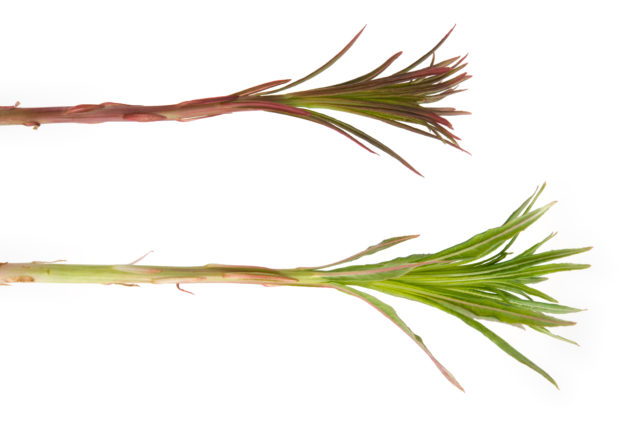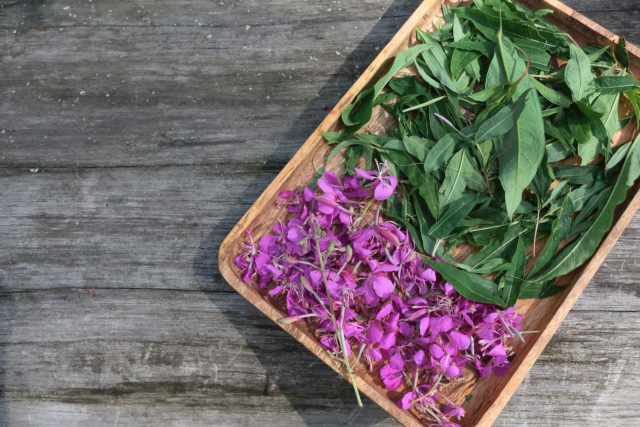Rosebay willowherb
Rosebay willowherb is also known as fireweed, great willowherb and bombweed. The latter name originated from the plant’s tendency to quickly take over bombing sites in the UK during the Blitz.
The leaves, stems and roots of the rosebay willowherb are rich in vitamin C and tannins. For the highest vitamin content, opt for fresh leaves.
Rosebay willowherb has a diuretic effect. In folk medicine, rosebay willowherb has been used to treat ailments from stomach bugs and gastritis to gastric ulcers.
When to collect
In early spring, the plant is foraged for its tender shoots that rise from the ground. Shoots about 10 cm long taste the best. They can be washed and chopped into salads, omelettes and soups or cooked whole, like asparagus.

The leaves of rosebay willowherb are used fresh in salads and herbal drinks or dried in tea blends. The best time to harvest is June-July, just before flowering. Fresh or fermented leaves can also be dried. Rosebay willowherb tea can be seasoned with, for example, lemon balm, blackcurrant or mint leaves. Collect rosebay willowherb leaves by stripping them off the stem, top to bottom, by hand.

The flowers of rosebay willowherb can be used to make a brightly coloured beverage. The rosebay willowherb is a highly weatherproof plant; whatever the summer weather has in store, you will definitely be able to forage enough ingredients!
Fermenting rosebay willowherb leaves
Fermenting improves the shelf life, taste and aroma of the leaves. Before fermenting, the rosebay willowherb leaves are spread on a flat surface and allowed to wither for a few hours at room temperature. The withered leaves are wrapped up in tight bundles. The bundles are then rolled until cell sap appears on the surface of the leaves. The bundles are placed loosely in glass jars with some air around them and covered loosely with a lid. Do not pack the leaves too tightly as fermentation requires oxygen.
Place the jars in a warm place (40–50°C), such as a herb dryer or a cooler heated with hot water bottles. Keep the temperature as constant as possible. If it is too cool, the leaves may grow mold, and if it is too warm, the enzymes are destroyed. The best fermentation time ranges from one hour to a few hours, until the leaves turn brown. The fermented leaves are spread loosely to dry. The fermented, dried leaves are stored, protected from light, in air-tight containers, such as glass jars or tin cans.